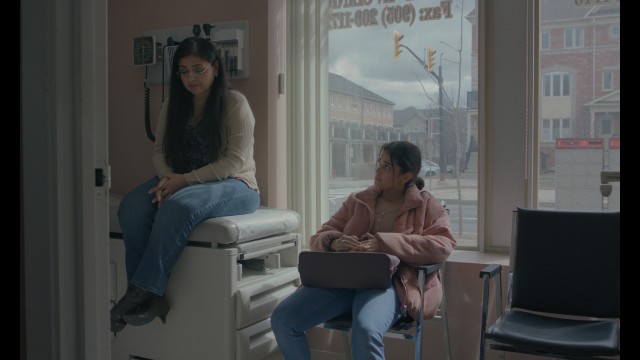As Sania drives her mother to a medical appointment, nothing she does seems to be right. Noor always has something to say and comments on everything her daughter does, but is happy to rely on her translation skills when talking to the doctor. In his short film, majboor-e-mamool (what will you do when I’m gone?), writer/director Haaris Qadri explores the pressure of being an immigrant kid, and the guilt that can come with it, when pushed into the position of caretaker. In just four scenes, we follow the mother/daughter duo on their mundane morning and witness the subtle, but permanent effect the relationship has had on Sania.
“The film is a reflection of my sister’s relationship with my mom, with parts of myself also injected into the story”
As a child of immigrants himself, it wasn’t surprising to learn that Qadri drew inspiration for his short from his own experiences, explaining that his narrative is “a reflection of my sister’s relationship with my mom, with parts of myself also injected into the story”. The film captures one of the many moments when the roles are reversed and the child has to become the parent, caught between an unconditional sense of duty and a feeling of guilt, for performing the task with attitude. Taking on this caretaker role comes with its share of frustration and exhaustion, and we see that all bubbling inside Sania, as she takes her mother to the doctor. The film catches her on an off day, allowing us to glimpse the complex feelings she is grappling with. Meanwhile, her mother remains oblivious to her daughter’s inner turmoil, simply embodying the familiar role of a nagging mom, as mothers often do.
Structured into four scenes – in the car, in the waiting room, in the examination room and then back in the car – each shot in long takes, with the camera locked in position, as we travel through those locations with the pair, the audience begins to feel the tension between them start to increase. As Sania’s frustration reaches its climax, before slowly deflating again in the end scene, the mother’s demeanor remains consistent throughout their outing. While focused on this one particular moment, the four “chapters” of what will you do when I’m gone? capture Sania’s conflicting feelings about her situation in general, giving the impression that this is just one of the many times she has experienced them.

Anjum Siddiqui (L) as Noor – the mother – and Anika Zulfikar as Sania – the daughter.
As Nada El-Omari, the editor, ensures we have enough time in each scene to grasp Sania’s frustration, without her character having to say much, Qadri and DP Aman Samra came up with the idea of the four shots after initial framing showed that additional coverage would not be needed. These locked-down, long-takes not only work to portray Sania’s feelings of being trapped in her situation, but also strip down the visual language to allow the performances to anchor the film, without any distractions.
As they were making the choice of how to shoot/present their film, Qadri and his team came to the realization that their lead actors, Anika Zulfikar and Anjum Siddiqui, both embodied their characters with remarkable sensitivity. Allowing the audience to empathize with both, without the need for close-ups, their performances never fall into the cliché of simply portraying the generational divide between a nagging mother and an ungrateful daughter. Instead they both bring the weight of their family dynamic to the screen, the authenticity of the mother/daughter relationship, and Sania’s emotional journey, ultimately becoming the backbone of the film.
what will you do when I’m gone? made its way around the festival circuit in 2023 with notable stops at Toronto Reel Asian (where it was awarded Best Canadian Short), TIFF Next Wave and Montreal’s FNC. Qadri is currently writing his next short film, which explores a similar theme of family drama, but with “with larger stakes”. He is also producing a project directed by his DP Samra, while also developing two sitcom series: Bintu’s Weddings and Kwality Family Care.

 Céline Roustan
Céline Roustan